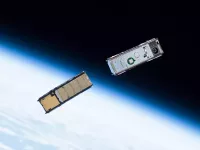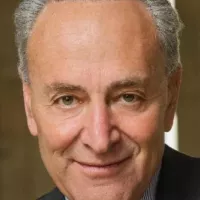KTVB is an NBC-affiliated television station located in Boise, Idaho, owned by Tegna Inc. The station operates from studios on West Fairview Avenue in Boise, with its transmitter on Deer Point in Boise County. KTVB is rebroadcast by KTFT-LD in Twin Falls, a semi-satellite station that inserts local advertising for the Magic Valley area. KTFT-LD has a sales office in Twin Falls and a transmitter near Jerome, Idaho. Together, KTVB and KTFT-LD are branded as the "KTVB Media Group".
March 1952: KIDO Files FCC Application
In March 1952, Boise radio station KIDO, owned by Georgia Davidson, filed with the Federal Communications Commission (FCC) seeking to build a television station on channel 7.
July 12, 1953: KIDO-TV Debuts
On July 12, 1953, Channel 7 debuted as KIDO-TV, becoming Idaho's second television station and the first to be fully licensed. While KFXD-TV started a month earlier, KIDO-TV was better organized with network and local programming.
1955: Live National Programming Begins
In 1955, live national programming became a reality with the World Series after KIDO-TV and KBOI-TV set up a microwave transmission link between Boise and Salt Lake City.
1955: Plans to Extend Channel 7 to Twin Falls
In 1955, then-KIDO-TV partnered with Twin Falls radio station KTFI to obtain a construction permit for channel 13 in that city, awarded as KHTV.
1956: KIDO-TV Tower Relocated
In 1956, KIDO-TV's tower was relocated to Deer Point, extending the station's coverage to an additional 80,000 people.
1956: Robert Krueger Starts at KIDO-TV
In 1956, Robert Krueger started at then-KIDO-TV and would serve in management for 40 years.
November 1958: Davidson Agrees to Sell KIDO Radio
In November 1958, Davidson agreed to sell KIDO radio to the Mesabi Western Corp.
1958: Davidson Sells KIDO Radio
In 1958, Georgia Davidson sold off KIDO radio station. The television station, Channel 7, changed its call sign to KTVB the following year.
February 1, 1959: Channel 7 Becomes KTVB
On February 1, 1959, channel 7 became KTVB after the sale of KIDO radio.
December 18, 1963: KTVB Receives Construction Permit
On December 18, 1963, KTVB received a construction permit to expand its reach with a satellite station on channel 13 in La Grande, Oregon.
December 6, 1964: KTVR Begins Broadcasting
On December 6, 1964, KTVR began broadcasting, offering local news and information for Eastern Oregon from studios in La Grande.
1967: KTVR Becomes a Rebroadcaster
In 1967, KTVB closed the local operation in La Grande and converted KTVR into a full-time rebroadcaster of the Boise station.
1969: KTVB Airs Sesame Street
In 1969, KTVB aired Sesame Street when the show debuted, as Idaho did not have a public station at the time.
1970: Ground Broken for New Studios
In 1970, ground was broken for new studios at 5400 Fairview Avenue.
1971: KTVB Helps Launch KAID-TV
In 1971, KTVB provided its transmitter site and engineering resources to launch KAID-TV (channel 4).
1974: KTVB Loses ABC Programming
In 1974, KTVB lost ABC programming to a new station—KITC-TV, soon renamed KIVI-TV, on channel 6.
1974: OEPBS Offer to Acquire KTVR
In 1974, KTVB received an offer from the Oregon Educational and Public Broadcasting Service (OEPBS) to acquire KTVR for integration into its statewide public television network.
March 7, 1975: KTVR Taken Out of Service
On March 7, 1975, KTVB took KTVR out of service while the deal with OEPBS was pending.
February 1977: KTVR Returns to Air Under OEPBS Ownership
In February 1977, KTVR returned to the air under OEPBS ownership.
1978: KTVB as Undisputed Ratings King
As early as 1978, KTVB was the "undisputed ratings king" in the market, well ahead of KBCI and KIVI.
1978: Davidson Discusses Financial Struggles
In a 1978 interview, Davidson noted that she "lived with the spectre of bankruptcy, a very embarrassing bankruptcy, day or night" due to financial struggles in KTVB's early years.
1979: Davidson Announces Sale to King Broadcasting
In 1979, Davidson announced the sale of KTVB to King Broadcasting of Seattle.
1979: KTVB Sold to King Broadcasting
In 1979, Davidson sold KTVB to King Broadcasting. The station continued to lead local news ratings in the market.
April 1980: King Broadcasting Takes Over
In April 1980, King Broadcasting took over KTVB. Paid religious programming on Sunday mornings was dropped.
1981: King Broadcasting Files for Low-Power TV Station
In 1981, renewed interest in bringing KTVB over-the-air to Twin Falls began when King Broadcasting filed for a construction permit for a low-power TV station.
1984: Idaho at Five Debuts
In 1984, KTVB was the first Boise station to present an hour of local early evening news when it debuted the 5 p.m. newscast Idaho at Five.
July 1, 1986: K38AS Debuts
On July 1, 1986, K38AS debuted as the first low-power station to be an NBC affiliate; KMVT ceased offering NBC programs leading up to its launch.
1986: KTVB Establishes K38AS
In 1986, KTVB established K38AS (now KTFT-LD), the first low-power NBC affiliate.
1990: King Broadcasting Company Put Up for Sale
In 1990, King Broadcasting Company put itself up for sale.
1990: Ownership Change Begins
Starting in 1990, KTVB changed ownership three times in larger transactions.
1991: Providence Journal Company Makes Offer
In 1991, King Broadcasting accepted an offer from the Providence Journal Company.
1992: First Weekend Morning News
In 1992, KTVB was the first station with weekend morning news.
1992: Transaction Closes with Providence Journal Company
In 1992, the transaction between King Broadcasting and Providence Journal Company closed.
December 1994: Station Takes KTFT-LP Call Sign
In December 1994, the station took a four-letter call sign of KTFT-LP (for "Twin Falls Television").
1995: KTVB Contributes to Northwest Cable News
In 1995, KTVB became a contributor to the new Northwest Cable News (NWCN) regional cable channel.
1996: Belo Corporation Purchases Providence Journal
In 1996, The Belo Corporation purchased Providence Journal.
November 1, 2002: KTVB Begins Broadcasting Digital Signal
On November 1, 2002, KTVB began broadcasting a digital signal on UHF channel 26.
October 2003: KTVB Launches 24/7 NewsChannel
At the end of October 2003, KTVB launched 24/7 NewsChannel on its second digital subchannel and local cable.
June 12, 2009: Analog Signal Shut Down
On June 12, 2009, KTVB shut down its analog signal, over VHF channel 7, transitioning to digital broadcasts.
November 2010: Dominance in News Ratings
In November 2010, each of KTVB's local newscasts had more viewers than their competition combined.
2011: 24/7 NewsChannel Rebranded
By 2011, the station had rebranded its 24/7 NewsChannel as "Idaho's Very Own 24/7", and it aired a dedicated 6:30 p.m. newscast and 7 a.m. morning news extension.
June 13, 2013: Gannett to Acquire Belo
On June 13, 2013, the Gannett Company announced that it would acquire Belo.
2013: KTVB Adds 4 p.m. News Hour
In 2013, KTVB added a 4 p.m. news hour.
2015: Gannett Split Into Separate Companies
In 2015, Gannett's TV stations and newspapers split into separate companies, the former being named Tegna.
2015: Gannett Broadcast Division Splits Off
In 2015, Gannett's broadcast division split off as Tegna.
2020: Idaho Today and The 208 Debut
In 2020, KTVB debuted a local lifestyle program, the midday Idaho Today, and reformatted its weeknight 5 p.m. news as the interactive The 208.
2021: Mark Johnson Retires
In 2021, anchor Mark Johnson spent 30 years with the station, retiring.
2022: Larry Gebert's Death
In 2022, Larry Gebert was the station's meteorologist for 30 years until his death.
2023: Local Sports Coverage on Subchannel
In 2023, the subchannel served as an outlet for local sports coverage, including Boise State Broncos men's basketball games and Idaho Steelheads minor league hockey.
2024: News and Public Affairs Programming
As of 2024, KTVB aired 30 hours a week of news and public affairs programming.
Mentioned in this timeline

Basketball is a team sport played on a rectangular court...
The National Broadcasting Company NBC is a major American commercial...

News encompasses information about current events disseminated through various media...

Seattle is the most populous city in Washington state and...

Twins are offspring resulting from the same pregnancy categorized as...

Satellites often spacecraft are objects intentionally placed into orbit around...
Trending
7 months ago World's Oldest Person, Inah Canabarro Lucas, Dies in Brazil at 116
3 months ago American hiker Cole Henderson found dead in Spanish Pyrenees after going missing.
Tristan Gray is an American professional baseball infielder currently playing for the Tampa Bay Rays in Major League Baseball MLB...

4 months ago Phillies Shutout Tigers, Schwarber Featured as Philadelphia Returns to First Place
Spain and Turkey maintain active diplomatic relations with embassies in each other's capitals Madrid and Ankara and consulates general in...

2 hours ago Justin Tucker's NFL Suspension Ends; Potential Teams Include Packers, Rams, and Falcons.
Popular

XXXTentacion born Jahseh Dwayne Ricardo Onfroy was a controversial yet...

Cristiano Ronaldo often nicknamed CR is a Portuguese professional footballer...

Candace Owens is an American conservative political commentator and author...

Chuck Schumer is the senior United States Senator from New...

Bernie Sanders is a prominent American politician currently serving as...

Vivienne Westwood was a highly influential English fashion designer and...